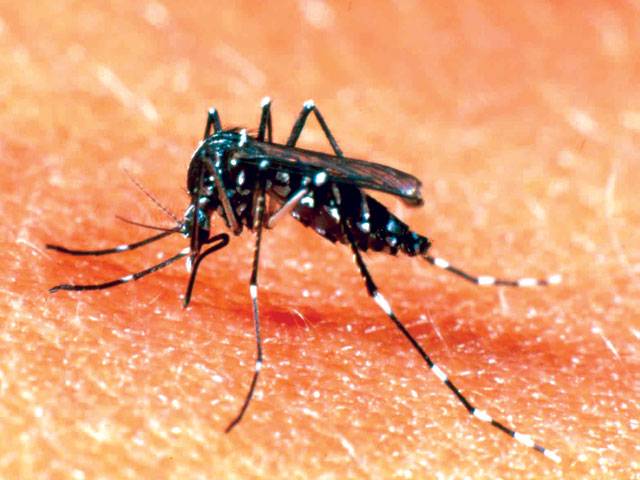PARIS: Complex genetic interaction between the mosquito and the virus that causes dengue fever lie at the spread of this dangerous disease, a study by French and Thai scientists said Thursday.
The mosquito-borne disease has traditionally been considered a problem of the tropics, but globalisation, climate change and jet travel are helping it move into more temperate zones, experts say. There is no vaccine or cure.
In a study published in the open-access journal PLoS Genetics, a team found that some mosquitoes of the main vector species, Aedes aegypti, are able to hand on the virus after sucking blood from an infected human, but others do not.
The answer lies in a genetic pairing between insect and virus, according to the paper France’s Pasteur Institute and the Armed Forces Research Institute of Medical Sciences in Bangkok.
To be able to infect humans, the mosquito first has to become successfully colonised by the virus.
After the mosquito feeds on an infected individual, the virus becomes established in the insect’s mid-gut cells, then disseminates throughout the rest of body.
The mosquito becomes infectious only once the virus reaches the salivary glands and is released into its saliva.–AFP
Saturday, April 20, 2024
Gene interplay helps to explain dengue’s spread

Pak economy improving, funds will be provided on request: IMF
9:57 PM | April 19, 2024
Minister advocates for IT growth with public-private collaboration
9:57 PM | April 19, 2024
Judges' letter: IHC seeks suggestions from all judges
9:55 PM | April 19, 2024
Formula 1 returns to China for Round 5
9:05 PM | April 19, 2024
Germany head coach Julian Nagelsmann extends contract till 2026 World Cup
9:00 PM | April 19, 2024
A Tense Neighbourhood
April 19, 2024
Dubai Underwater
April 19, 2024
X Debate Continues
April 19, 2024
Hepatitis Challenge
April 18, 2024
IMF Predictions
April 18, 2024
Kite tragedy
April 19, 2024
Discipline dilemma
April 19, 2024
Urgent plea
April 19, 2024
Justice denied
April 18, 2024
AI dilemmas unveiled
April 18, 2024
ePaper - Nawaiwaqt
Advertisement
Nawaiwaqt Group | Copyright © 2024





